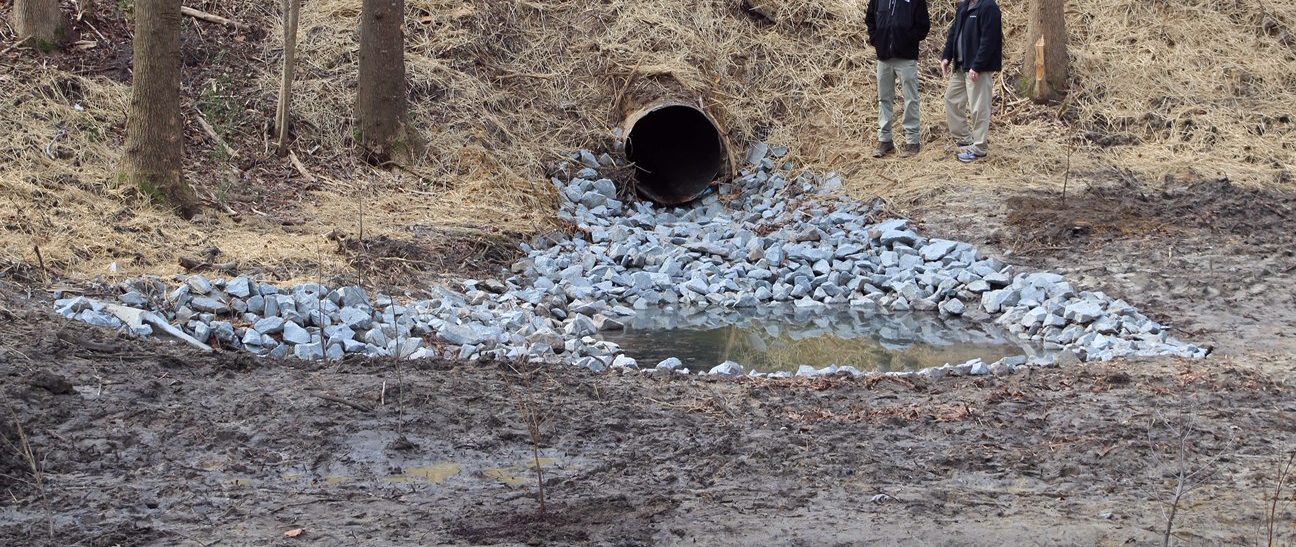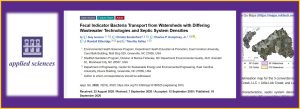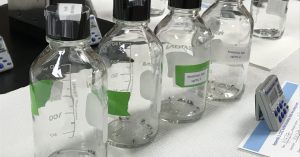Humphrey C and Iverson G (2020). Reduction in Nitrogen Exports from Stormflow after Conversion of a Dry Detention Basin to a Stormwater Wetland. Applied Sciences 10(24):9024. doi:10.3390/app10249024
Abstract
Stormwater control measures such as dry detention basins and wetlands are often used to reduce the discharge of urban runoff and nutrients to streams, but differences in nutrient treatment may vary between practices. The goal of this study was to compare the nitrogen treatment efficiency of a dry detention basin before and after it was converted into a stormwater wetland. Inflow and outflow from a detention basin in Greenville, North Carolina was sampled during 13 storms and the stormwater wetland was sampled during 10 storms. Total dissolved nitrogen (TDN), NO3−, NH4+, chloride, dissolved organic carbon (DOC), and physicochemical properties were evaluated. Inflow and outflow from the detention basin had identical median concentrations of TDN (0.47 mg L−1). The median TDN concentration for wetland outflow (0.18 mg L−1) was 63% lower relative to inflow (0.49 mg L−1). The hydraulic residence time of stormwater in the wetland was more than 10 times greater relative to the dry basin. There was a significant (p < 0.001) reduction in dissolved oxygen and oxidation reduction potential and an increase in median DOC concentrations in wetland outflow relative to inflow. Most of the reduction in TDN within the wetland was attributed to loss of NO3− (80% reduction), possibly due to denitrification. Conversion of dry detention basins to wetlands may provide significant benefits with regards to reducing TDN transport associated with urban runoff.




